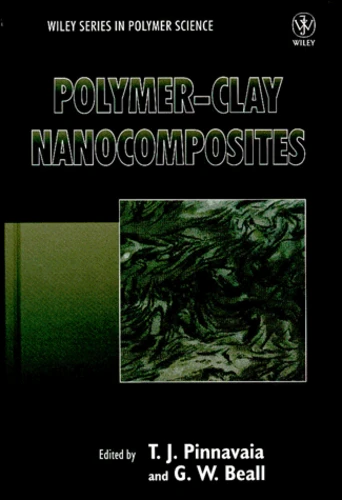Polymer-Clay Nanocomposites
Par :Formats :
- Paiement en ligne :
- Livraison à domicile ou en point Mondial Relay indisponible
- Retrait Click and Collect en magasin gratuit
- Nombre de pages349
- PrésentationRelié
- Poids1.62 kg
- Dimensions15,8 cm × 23,7 cm × 2,7 cm
- ISBN0-471-63700-9
- EAN9780471637004
- Date de parution07/12/2000
- Collectionwiley series in polymer scienc
- ÉditeurWiley
Résumé
Polymer-clay nanocomposites are formed through the union of two very different materials with organic and mineral pedigrees. The hybrid compositions, however. exhibit large increases in tensile strength, modulus, and heat distortion temperature as compared with the pristine polymer. The composites also have lower water sensitivity. reduced permeability to gases, and a smaller thermal coefficient of expansion. All of these property improvements can be realised without a loss of clarity in the polymer. Further, it has been found that nanocomposites impart a level of flame retardance and UV resistance not present in the pure polymer. These improvements in performance properties at relatively low clay loading (typically 2 - 10 wt °o) have stimulated intensive research in both industry and academia over the past decade.
Polymer-Clay Nanocomposites presents the first comprehensive overview of the state of the art of these materials since they were first reported a decade ago.
Polymer-clay nanocomposites are formed through the union of two very different materials with organic and mineral pedigrees. The hybrid compositions, however. exhibit large increases in tensile strength, modulus, and heat distortion temperature as compared with the pristine polymer. The composites also have lower water sensitivity. reduced permeability to gases, and a smaller thermal coefficient of expansion. All of these property improvements can be realised without a loss of clarity in the polymer. Further, it has been found that nanocomposites impart a level of flame retardance and UV resistance not present in the pure polymer. These improvements in performance properties at relatively low clay loading (typically 2 - 10 wt °o) have stimulated intensive research in both industry and academia over the past decade.
Polymer-Clay Nanocomposites presents the first comprehensive overview of the state of the art of these materials since they were first reported a decade ago.

